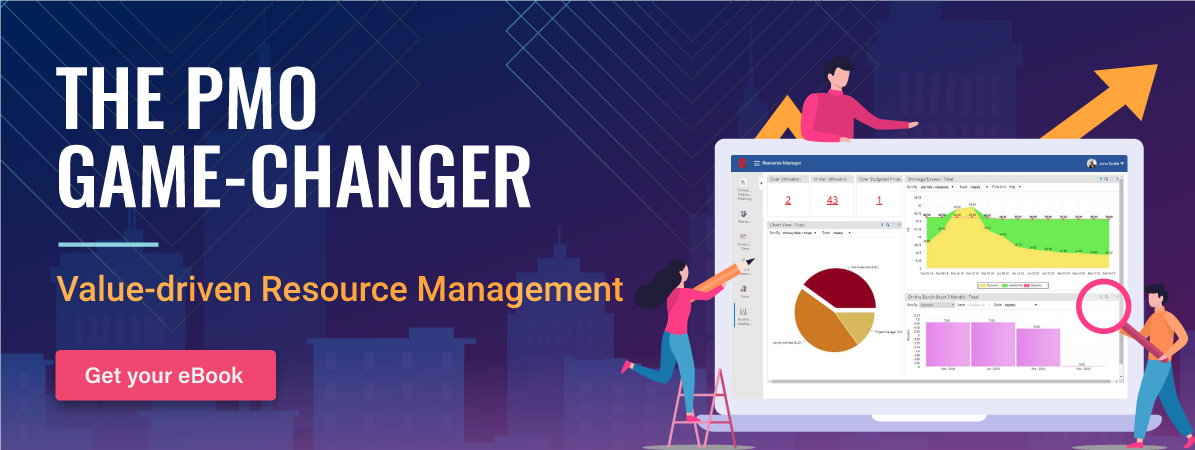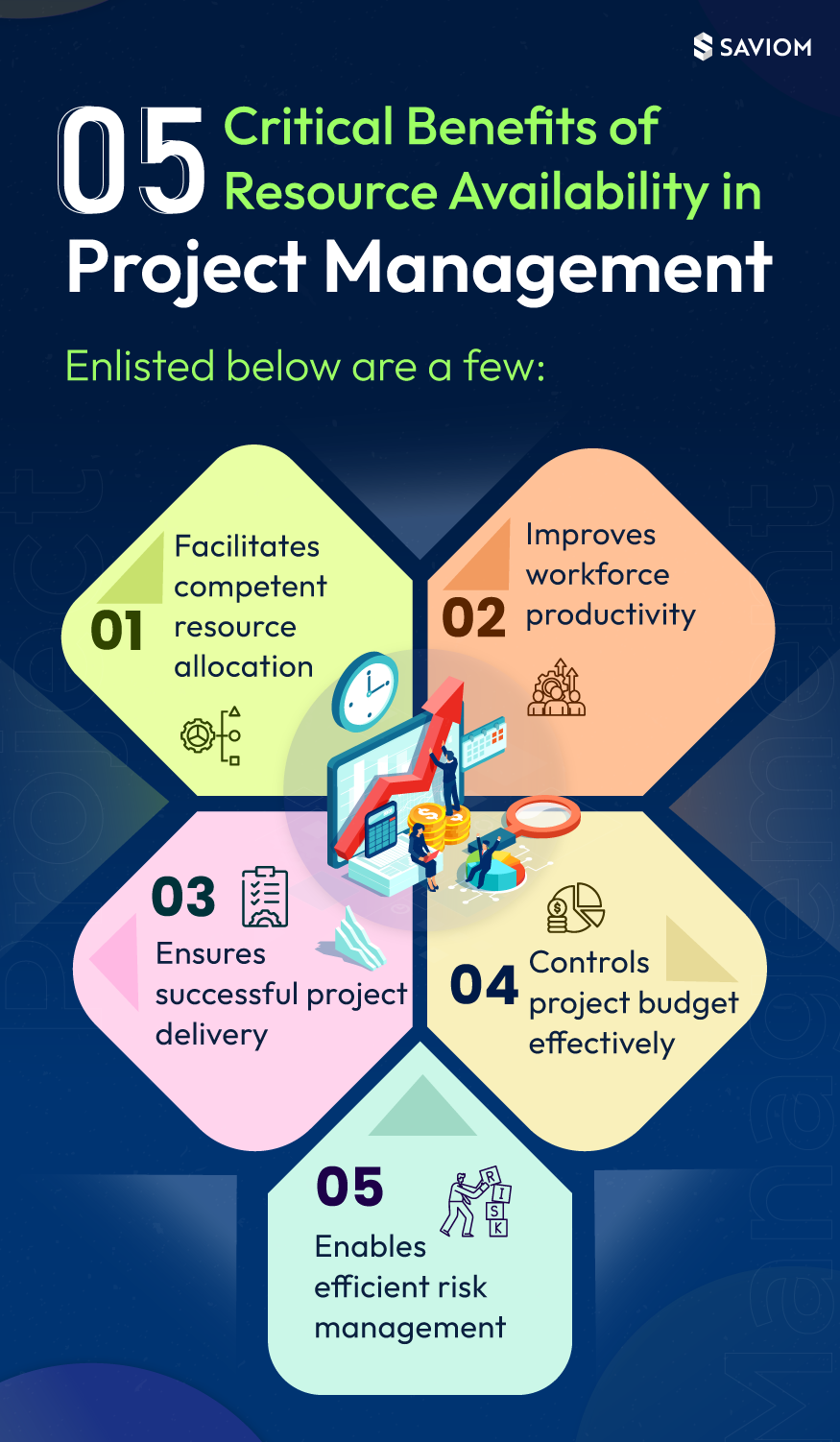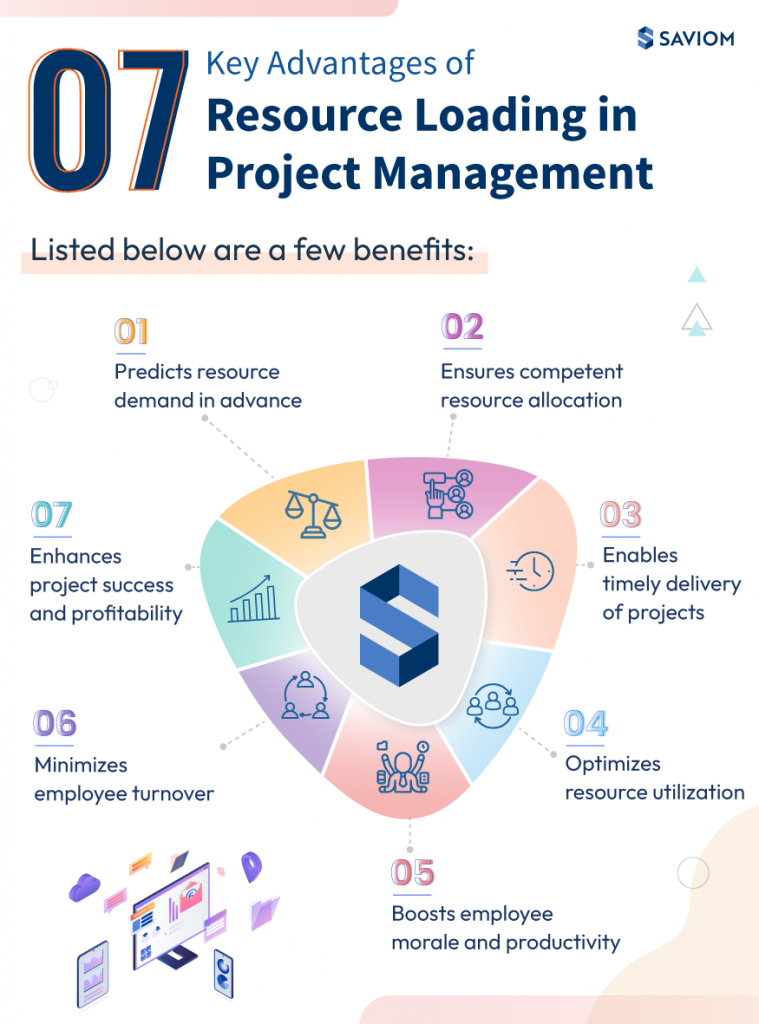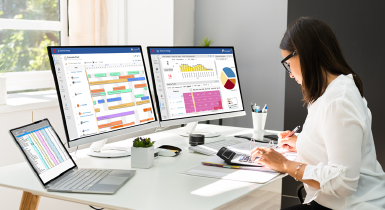Let’s begin this with a scenario. You own a construction firm that has bagged several projects such as building shopping complexes, malls, housing societies, townships, etc.
If you carefully observe, constructing a township and society entails a similar objective, such as developing a residential haven for the client. So, if you group them together, it will be easier to manage their resources, budget, etc., as they are interrelated and share a common purpose.
Similarly, another program can be building a shopping complex or mall as they share a similar goal of constructing a recreational and shopping facility for the client.
The next hierarchy is the portfolio, where you group the construction programs together as they all serve the same strategic goal. This grouping mechanism led to the development of the 3 Ps- Project, program, and portfolio.
Now that we have set the stage, let us understand the difference between project management, program management, and portfolio management.
Let’s begin.
Project vs. program vs. portfolio
A project is a part of a program, while a program is a part of a portfolio.
It implies that a project is at the lowest level in the hierarchy of the 3Ps (project, program, portfolio), while a portfolio is at the topmost level.
Let’s understand the definitions,
Project
A project is a temporary endeavor with a fixed start date and end date undertaken to create a product or service. It is performed by people and bound by budget, timeline, and scope. For example, the construction of an apartment can be considered a project.
Program
A program is a group of similar or interrelated projects managed together in a coordinated manner. The aim is to regulate projects that have a common goal and would yield better results and profitability when managed together.
Portfolio
A portfolio is a group of different programs and/or projects within the same organization. These programs or projects may not necessarily be related to one another. Taking the initial example, all the individual townships, societies, or malls, when grouped together, can be considered a portfolio.
From the KPI standpoint, most of them are common to these three, but differ in the calculation. These are return on investment, utilization rates, earned value, etc.
Based on the organizational strategy, the operations are usually carried out by the PMO at all three levels to reduce the administrative burden on managers.
What does project management comprise?
Project management is limited to managing a single project, its resources, budget, and other aspects to deliver it successfully.
It comprises the following elements.
Defining project scope
A project scope document gives a comprehensive account of goals and deliverables, schedule and budget, acceptance criteria, key processes, risks, and constraints. This document ensures alignment between the client’s requirements and final deliverables and fosters transparency. It also serves as a reference point for any future changes needed during the project execution, helps assess their repercussions, and assists in informed decision-making accordingly. So, defining and documenting the project scope is the first element of project management.
Project planning
After the project objective is understood and agreed upon, the next critical element is project planning. It implies deciding how to execute, monitor, control, and close the project. A work breakdown structure is an integral part of project planning as it helps simplify the project into manageable tasks. Project planning is an iterative process and is never complete until a project is closed. The complexity of a project determines the length of the project planning stage in project management.
Resource scheduling and optimization
After creating the work breakdown structure and estimating skill requirements, the project manager raises resource requests. Once the resource manager fulfills them, the project manager assigns them to different tasks based on their skill sets, experience, capacity, etc.
After allocating resources, tracking utilization levels and optimizing their schedules is essential to ensure that no one is overutilized or burnt out. Resource optimization is a comprehensive technique that helps align the project implementation and completion dates with resource availability.
Regular status updates
Informing the concerned authority about the project’s progress is crucial to keeping them on the same page. Therefore, status updates form an integral part of project management. The project manager shares the status of the project’s constraints with stakeholders, sponsors, and team members regularly throughout the project’s lifecycle. They also inform clients or stakeholders about any major issues or challenges to seek their buy-in for remedial measures.
Risk management
Risk management is the process of identifying, assessing, and preparing for any potential project risks that could turn into issues later. It also involves prioritizing risks based on their likelihood and impact. Various methods like risk matrix, assumption analysis, etc., can help with the same. For example, the manager can plan for prolonged absences/unplanned attritions by keeping some similar-skilled resources in buffer, especially for critical roles.
Regulating project lifecycle
Project management encompasses tracking a project at various stages of its life cycle, which helps identify and mitigate possible roadblocks, discrepancies, or issues that can later disrupt the project. Suppose you notice any variance from the initial budget, you can take proactive measures to control it before it derails the entire project.
This is how projects are managed. Whereas, the regulation of a program looks at a broader perspective and ensures the shared goal of individual projects is achieved.
Let’s understand what it entails.
What does program management comprise?
Program management refers to managing all the interrelated projects together and ensuring they are well-coordinated and strategically aligned.
It comprises the following elements:
Supervising resource allocation at a program level
Program management involves managing and supervising resources in individual projects. It includes identifying and assigning the right team members for each job and moving them between projects to address ramp-up and ramp-down processes across the program efficiently.
This helps minimize bench time and utilize resources within the program instead of hiring new candidates. Further, managing finances or non-human resources and adjusting them between projects to avoid budget or schedule overruns also comes under program management.
Tracking individual projects’ progress
Program management involves tracking individual projects’ progress and ensuring that they all are on the right path and aligned with the program’s objective. It also includes identifying and mitigating any issues hindering an individual project.
The manager can then help the respective project manager eliminate the roadblocks and hindrances through guidance and resources as required. In addition, administering various ongoing operational activities and their outcomes also comes under the umbrella of program management.
Program-level risk management
Program-level risk management involves identifying and understanding various possible threats and risks to the program and implementing an appropriate mitigation strategy.
For example, if the manager notices a budget overrun in a single project, they can intervene to control costs proactively. They can take measures like revising the other projects’ budgets to retain the balance.
Managing project interdependencies
Multiple projects within a program can have several interdependencies. They can be internal, including knowledge-based, resource or technology related, etc., or external, including market interdependencies. Let’s say, an apartment and bungalow under the same township project require the same equipment for their construction.
The manager can assess various parameters like the deadline, budget, profitability, etc., to determine the priority level of projects and provide the equipment accordingly. Further, they can treat this equipment as an asset for not just these two projects but also for future similar projects. This way, creating and preserving assets (prototypes, code snippets, tools, templates, etc.) can help manage project interdependencies better and save time and costs for similar future projects.
Stakeholder management
A program manager acts as a primary point of contact for various stakeholders and maintains effective and healthy communication with them throughout the program.
For that, communicating with them on a regular basis and keeping them up-to-date with the milestones achieved and overall progress is vital. It is also crucial to be transparent about the issues and challenges at any point in time and implement corrective measures only after seeking their feedback, suggestions, and buy-in.
Change management
Sometimes, clients may request changes to one or more projects. Change management is the process of creating a framework to handle these change requests and ensure timely project delivery. For example, if a client requests the addition of two more functionalities in an application, it may affect the program’s overall budget and timeline.
In this case, the program manager coordinates with concerned stakeholders, senior management, and the Change Control Board (CCB) to discuss these requests. After thoroughly analyzing and determining the feasibility of the two functionalities, the board either accepts or denies the request.
Now that program management is clear, let’s discuss what portfolio management entails.
What does portfolio management comprise?
As discussed above, portfolio management is about looking at the projects from a broader perspective and managing them for strategic alignment.
The following are its components.
Project selection and prioritization
Effective portfolio management involves creating a list of potential pipeline projects or ideas for new projects. After that, the portfolio manager selects the projects according to predefined standardized selection criteria in terms of business value, ROI, resource efforts and requirements, competitiveness, alignment with the strategic goals, etc.,
Following that, the portfolio manager evaluates and prioritizes them as per standardized criteria. Accordingly, they can initiate allocating resources (human and non-human) to high-value projects, followed by other endeavors.
Validating project feasibility before initiation
Several bottlenecks, constraints, or issues can render even the most balanced and judiciously created portfolio infeasible. Therefore, portfolio management doesn’t restrict itself to selecting and prioritizing projects.
Instead, it also involves discussing dependencies, skill requirements, capacity, budget, and other constraints with concerned stakeholders and team members. Only after validating all the projects, the manager eventually initiates them.
Continuous management and monitoring
Following the initiation of projects is the step of tracking the status of the projects. A discrepancy, delay, or budget overrun in one project can have a domino effect on the rest of the projects and eventually the portfolio.
Implementing project portfolio management software can help them monitor every project’s progress on a centralized platform in real-time.
Maximizing portfolio profitability
Portfolio management includes monitoring the portfolio budget and controlling it with suitable measures. It encompasses ensuring competent and cost-effective resource allocation to avoid over / under allocation of tasks and maximize profitability and productivity.
The portfolio manager also regularly revises the program list and makes sure that only the projects with the highest business value remain the top priority. They also have the authority to remove a program or project that no longer aligns with the company’s strategy. It helps save time and unnecessary expenditure and mobilize the resources to high-priority projects.
Portfolio-level risk management
Common types of portfolio-level risks include:
– External ones, like disruption in an industry, changes in
competitors like mergers or acquisitions, recessions, environmental disasters, etc.
– Internal ones, including operational challenges, senior leadership changes, etc.
– Execution-related risks, including limited resource capacity, weak project management
standards, project dependencies, etc.
Portfolio management entails creating a governance team with seasoned program managers, subject matter experts from various industries, financial analysts, etc. This team conducts regular audits to identify any risks and issues, assess them, and intervene to prevent or eliminate them proactively.
Regular communication with senior management
Similar to programs, regular communication with the senior management is a crucial component of portfolio management.
Portfolio management involves keeping the higher-ups informed of the overall progress of the portfolio and conveying any bottlenecks that need timely intervention.
In some cases where the portfolio manager implements any portfolio-level change or in a particular project or progress, justifying it with the reason(s) to the senior management is essential. It helps retain their trust, get any assistance required, foster transparency, and ensures alignment of the portfolio with organizational goals.
Conclusion
As already evident, when you scale up from project management to program/portfolio management, the scope is defined on a broader range. While project management is all about monitoring an individual project’s activities and ensuring its successful completion, program and portfolio management are about regulating a cluster of projects.
Though all the three domains are essentially different, they are complementary and interrelated to each other. Therefore, it is vital for the project managers, program managers, and portfolio managers to coordinate and ensure overall business growth and success.















